

Please don't get me wrong. I loved the movie Braveheart. It was one of the few things I asked for that Christmas when it came on on video. I also have the soundtrack and I read the book......... and maybe that is where the trouble lies. The book was very well written in terms of plot and story line, however it was very poorly researched. Most of the errors that occur in the movie also occurred in the book. The reason I am making this page is because it really ticks me off to see a movie that is no where near historically correct.
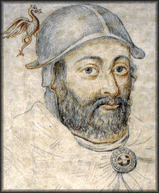

In the movie
early on it speaks of Malcolm Wallace being a farmer, which he was not.
It is true that he died fighting the English, but not in a simple peasant
upraising. He was killed at Loudoun Hill. William's brother
Malcolm on the other hand actually survived his brother.

Wallace did
not become an outlaw as he did in the film either. He was an outlaw
before his wife was killed. Neither William nor his brother Malcolm
had signed the Ragman Roll (August 28, 1296) at Berwick. This document,
was an oath of fealty to Edward I. So the Wallaces became outlaws.

After Wallace
became an outlaw, he married Marion Braidfoot (Murron in the movie), a
woman who lived in Lanark. One day while he was visiting her secretly,
because he was being hunted, he fought with a English patrol. He
managed to fight his way clear and he retreated to Marion's home.
While the English were battering the front door; Wallace escaped out the
back and into the rocky Cartland Crags. Sir William Hazelrig, the
Sheriff of Lanark, burned down Marion's home and had her and her servants
cut down. Wallace full of wrath, gathered a group of men and attacked
the fort at Lanark at nightfall. Wallace cut Hazelrig into small
pieces with his sword and burned the buildings and all they contained.
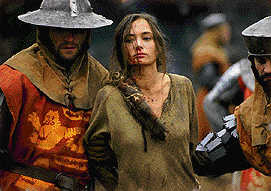
This was not
the end of Wallace's vendetta of revenge; he and his band of men turned
toward Ayr where his uncle had been sheriff. Wallace's uncle had
removed from his position when Edward I made Henry Percy of Northumberland
the Sheriff. Percy appointed a deputy named Arnulf, who summoned
Wallace's uncle and several others and hung them from the rafters of the
newly built garrison. Wallace's band attacked and destroyed the garrison
at Ayr after nightfall.
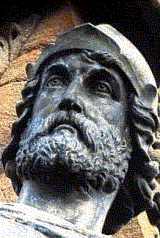
Important people
left out of the movie: Sir Malcolm Wallace, William's brother; Andrew
Moray, a nobleman who raised the standard of rebellion, and was fatally
wounded at the Battle of Stirling Bridge. Sir William Douglas and
James Stewart, both noblemen who fought against the English as well.
James Stewart was Wallace's liege lord. Alexander Scrymgeour was
one of the most important people left out of the movie. He was one
of Wallace's closest confedants and his personal standard bearer.
He later became the Royal Standard bearer when Bruce became King.
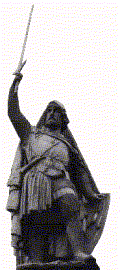
The political
situation was not as the movie portrayed it either. In the film,
there is dispute between the Bruces and Balliols. John Balliol had
been the King of Scots but was forced from the throne by Edward I after
an unsuccessful rebellion. In actuality, there was dispute between
the Bruces and Comyns. This conflict later ended when Bruce killed
John Comyn in the Chapel of Dumfries. Then Robert the Bruce declared
himself King of Scots. However this happened after the end of the
film.
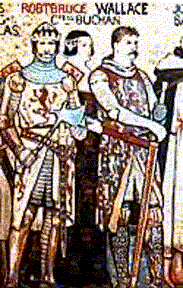
The Battle of Stirling Bridge, in the movie it was portrayed as an open field. It actually took place at the Stirling Bridge. The English were unable to move forward across the bridge or retreat, due to the Scots cutting down the br idge during the battle. They were consequently slaughtered. This was the first time that a professional army of knights had ever been defeated by common folk.
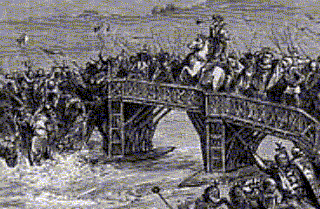

In March 1298
in Selkirk Forest, Wallace was dubbed a knight, it is arguable who knighted
him. However, it is most likely to have been Robert the Bruce.
There was then a general vote of the nobles and they named him the Guardian
of Scotland. After this, Wallace moved his armies south into Northern
England. He did not however, sack the city of York as in the movie,
and as a side note the Scots as a rule did not use siege warfare.
They lacked siege engines and the knowledge to use them. York became
the headquarters of government on May 25 1298 and remained that way for
the next six years.
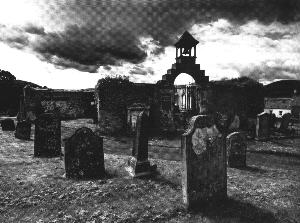
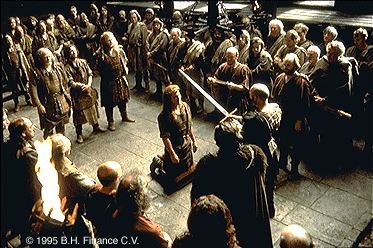
In July of
1298 the English and Scots clashed again at Falkirk. This is the
battle that Wallace used the schiltrons (the hedgehog of spears, pulled
into circles) in, not at Stirling Bridge as the movie pictured. The
Battle of Falkirk is said to have been an English victory, however, due
to the heavy losses the English sustained, it can arguably said that it
was a draw, with the English in control of the field. Wallace was
rescued at the last moment from the English, by Robert the Bruce and a
detachment of cavalry.

After the
battle Wallace abdicated the Guardianship. It fell into the hands
of Robert the Bruce and John Comyn. The Guardianship changed hands
again after this several times, before The Bruce was crowned.
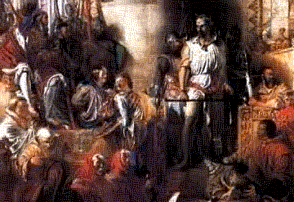
Wallace then went to Rome to attempt to persuade the Pope help Scotland. He was unsuccessful.
Little heard
of for seven years, then he suddenly appears in February 1304 and engages
the English at Peebles and at the Bridge of Earn in September of 1304.
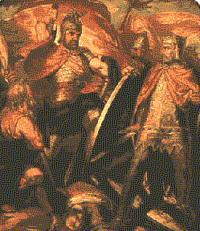
Little is
know about what happened concerning Wallace until August 3, 1305, when
he was captured in Glasgow. While he was in the house of Robert Rae,
he was betrayed by Sir John Menteith, for whom Robert Rae was a servant
of.


He was
taken to London on horseback his legs tied under the horse. He arrived
in London on August 22, 1304 in the evening and was placed in the house
of Alderman William de Leyre in the parish of Allhallows Fenchurch.
The Mayor of London along with the sheriffs and the alderman, led Wallace
to Westminster Hall bound and shackled, through jeering crowds. As
he was tried a crown of laurels was placed upon his brow. This was
because of an alleged claim that he would be crowned at Westminster.
He admitted to all of the crimes placed on him save that of treason against
King Edward i. He claimed that he had only been defending his country
against its enemies and that he had never taken an oath of fealty toward
Edward. However the court found him guilty and he sentenced.
He was chained flat to a hurdle and was dragged over cobblestones for four
miles from Westminster to Smithfield. There he was hanged until near
strangulation. Then he was castrated and disemboweled, his genitals
were burned before his eyes and his entrails set ablaze while still attached
to him. After this he was decapitated. His heart was removed
and burned. He was hacked into four pieces and his body parts sent
to Newcastle-on-Tyne, Berwick, Stirling, and Perth. His head was
placed on a pike on London Bridge.

The Scottish
War of Independence continues on. Bruce is crowned King of Scots.
He leads his rag-tag army against Edward II after the Longshanks had died.
At Bannockburn the Scots had been surprised by the English. However
in the movie it is portrayed as an almost Scottish surrender. This
is not the case. The Scottish pinned the English in a horseshoe shaped
curve in the Bannockburn. The heavily armored English knights sank
into the mire and were hacked down by the clansmen. Although a peace
treaty took many more years to sign. This was truly the start of
Scottish Independence.
